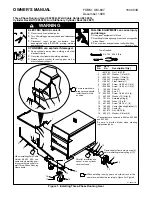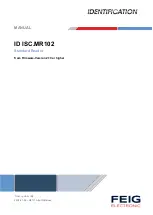
40
40
HCD-GNZ7D/GNZ8D/GNZ9D
HCD-GNZ7D/GNZ8D/GNZ9D
• Note For Printed Wiring Boards And Schematic Diagrams
Note on Printed Wiring Board:
•
X
: parts extracted from the component side.
•
Y
: parts extracted from the conductor side.
•
: Pattern from the side which enables seeing.
(The other layer’s patterns are not indicated.)
Caution:
Pattern face side:
Parts on the pattern face side seen from
(Conductor Side)
the pattern face are indicated.
Parts face side:
Parts on the parts face side seen from
(Component Side) the parts face are indicated.
•
Indication of transistor.
•
A
: B+ Line.
•
B
: B– Line.
• Voltage and waveforms are dc with respect to ground
under no-signal (detuned) conditions.
no mark : FM
∗
: Impossible to measure
• Voltages are taken with a VOM (Input impedance 10 M
Ω
).
Voltage variations may be noted due to normal produc-
tion tolerances.
• Waveforms are taken with a oscilloscope.
Voltage variations may be noted due to normal produc-
tion tolerances.
• Circled numbers refer to waveforms.
• Signal path.
F
: AUDIO
f
: TUNER
L
: VIDEO (COMPONENT)
r
: VIDEO (COMPOSITE)
E
: TAPE PLAY (DECK A)
d
: TAPE PLAY (DECK B)
G
: TAPE REC (DECK B)
J
: DVD (AUDIO)
c
: DVD (RF)
I
: DVD (DIGITAL)
• Abbreviation
E2
: 120 V AC area in E model
E3
: 240 V AC area in E model
E12
: 220-240 V AC area in E model
E13
: 220-230 V AC area in E model
E15
: Iran model
E51
: Chilean and Peruvian model
AUS
: Australian model
EA
: Saudi arabia model
PH
: Philippine model
SP
: Singapore model
MX
: Mexican model
TH
: Thai model
Note:
The components identified by mark
0
or dotted line
with mark
0
are critical for safety.
Replace only with part number specified.
UNLEADED SOLDER
Boards requiring use of unleaded solder are printed with the lead
free mark (LF) indicating the solder contains no lead.
(Caution: Some printed circuit boards may not come printed with
the lead free mark due to their particular size)
: LEAD FREE MARK
Unleaded solder has the following characteristics.
• Unleaded solder melts at a temperature about 40
°
C higher than
ordinary solder.
Ordinary soldering irons can be used but the iron tip has to be
applied to the solder joint for a slightly longer time.
Soldering irons using a temperature regulator should be set to about
350
°
C.
Caution: The printed pattern (copper foil) may peel away if the
heated tip is applied for too long, so be careful!
Unleaded solder is more viscou-s (sticky, less prone to flow) than
ordinary solder so use caution not to let solder bridges occur such
as on IC pins, etc.
It is best to use only unleaded solder but unleaded solder may also
be added to ordinary solder.
• Circuit Boards Location
C
B
These are omitted.
E
Q
B
These are omitted.
C
E
Q
B
These are omitted.
C
E
Q
Note on Schematic Diagram:
• All capacitors are in
µ
F unless otherwise noted. (p: pF)
50 WV or less are not indicated except for electrolytics
and tantalums.
• All resistors are in
Ω
and
1
/
4
W or less unless otherwise
specified.
•
2
: nonflammable resistor.
•
C
: panel designation.
SUB TRANS board
JACK board
PANEL board
TRANS board
STREAM board
AUDIO board
FRONT AMP board
LEAD PIN board
(GNZ7D)
SUBWOOFER board
(GNZ9D)
SIRCS board
DRIVER board
SW board
DMB10 board
MOTOR (LD) board
MOTOR (TB) board
SENSOR board
SURROUND AMP board
(GNZ8D/GNZ9D)
VIDEO board
w w w . x i a o y u 1 6 3 . c o m
Q Q 3 7 6 3 1 5 1 5 0
9
9
2
8
9
4
2
9
8
T E L
1 3 9 4 2 2 9 6 5 1 3
9
9
2
8
9
4
2
9
8
0
5
1
5
1
3
6
7
3
Q
Q
TEL 13942296513 QQ 376315150 892498299
TEL 13942296513 QQ 376315150 892498299
















































